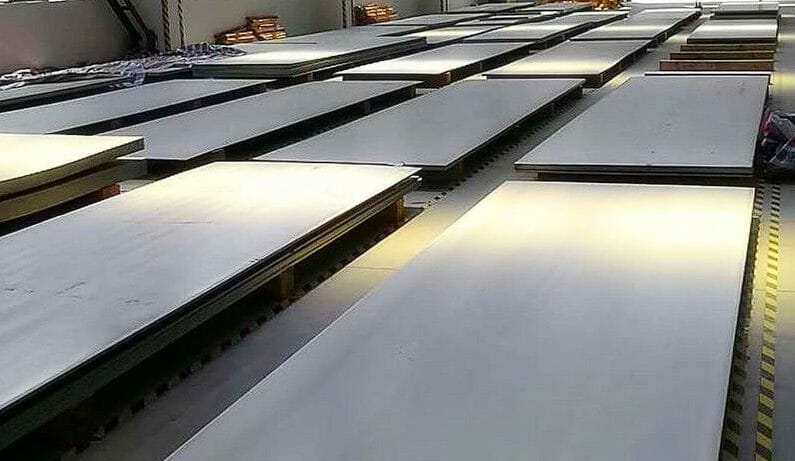Stainless steel is a common material used in various industries and applications. When it comes to choosing the right type of stainless steel, there are several factors to consider, such as corrosion resistance, welding capabilities, and mechanical properties. Two of the most popular alloys are 304 and 304L stainless steel, but what sets them apart?
In this section, we’ll provide an overview of the differences between 304 and 304L stainless steel, with a focus on their corrosion resistance and welding capabilities. By the end, readers should have a better understanding of which alloy is the most suitable for their specific needs.
Key Takeaways:
- 304 and 304L stainless steel are two popular alloys used in various industries and applications.
- Understanding the differences between these two alloys is important to determine which one is most suitable for specific needs.
- Factors like corrosion resistance and welding capabilities set these alloys apart.
What is Stainless Steel and How is it Made?
Stainless steel is a metal alloy composed primarily of iron, chromium, and nickel. It is known for its impressive corrosion resistance, durability, and strength. The manufacturing process typically involves melting the metals together in a furnace, adding various elements to adjust the composition, and then cooling and solidifying the mixture into the desired shape or form.
The differences between 304 and 304L stainless steel can be attributed to variations in their composition and manufacturing process. Both alloys contain the same basic elements, but 304L has a lower carbon content, which makes it more suitable for welding applications.
Stainless steel is versatile and can be shaped and formed into a wide range of products, from kitchen appliances to industrial machinery. The various properties of stainless steel that make it popular in different applications include its strength-to-weight ratio, heat resistance, and corrosion resistance.
Corrosion Resistance: 304 vs 304L Stainless Steel
One of the most critical factors to consider when choosing between 304 and 304L stainless steel is their corrosion resistance. Both alloys are known for their excellent corrosion resistance in a wide range of environments. However, there are some differences in their performance under certain conditions.
The primary difference between the two alloys is their carbon content. 304L stainless steel has a lower carbon content than 304 stainless steel, which makes it more resistant to intergranular corrosion. This type of corrosion can occur when stainless steel is exposed to temperatures between 800 and 1600 degrees Fahrenheit, causing the material to become sensitized. Sensitization can lead to cracking and other structural damage, which can compromise the integrity of the stainless steel.

304 stainless steel, on the other hand, is more susceptible to intergranular corrosion when exposed to high temperatures. Although this type of corrosion is rare in most applications, it can occur in certain industries and environments. For example, 304 stainless steel may not be suitable for use in environments with high concentrations of chlorides, such as coastal areas or chemical processing plants.
Both alloys are highly resistant to corrosion from most common acids and alkalis, making them suitable for use in a wide range of chemical and pharmaceutical applications. They also exhibit excellent resistance to atmospheric corrosion, making them popular choices for outdoor applications such as architectural facades and equipment enclosures.
Welding Capabilities: 304 vs 304L Stainless Steel

One of the critical factors that differentiate 304 and 304L stainless steel is their welding capabilities. Both alloys are relatively easy to weld but have different effects on the final product.
304 stainless steel has a higher carbon content, making it more challenging to weld and more susceptible to sensitization during welding. This means that 304 stainless steel can become prone to corrosion in high-temperature environments near welding. To mitigate this, welding with 304 stainless steel requires a low-carbon filler metal to ensure proper corrosion resistance.
304L stainless steel, on the other hand, has a lower carbon content, making it easier to weld and less susceptible to sensitization during welding. This makes 304L stainless steel more suitable for welding applications, especially in high-temperature environments. Welding with 304L stainless steel can be performed with standard filler metals without significant concerns about corrosion resistance.
Overall, when choosing between 304 and 304L stainless steel for welding applications, it is critical to consider the impact of carbon content on the welding process and the potential effect on the final product’s corrosion resistance.
Other Mechanical Properties: 304 vs 304L Stainless Steel

Beyond corrosion resistance and welding capabilities, there are several other mechanical properties to consider when comparing 304 and 304L stainless steel. Tensile strength is an important factor to consider, with 304 having a higher tensile strength than 304L. Hardness is another factor to consider, and both alloys have similar hardness levels. However, 304L may be more resistant to cracking under stress due to its lower carbon content.
Ductility is also an essential consideration, as it measures a metal’s ability to deform without breaking. 304 stainless steel has higher ductility than 304L, making it more suitable for forming and shaping applications. However, due to its lower carbon content, 304L may be more suitable in environments where corrosion is a significant concern.
When selecting between 304 and 304L stainless steel, it is essential to consider the specific mechanical properties required for your application. Factors such as the environment, stress levels, and forming requirements should all be taken into account to ensure the most suitable alloy is selected.
Applications: 304 vs 304L Stainless Steel

304 and 304L stainless steel are widely used in various industries and applications due to their versatility, durability, and resistance to corrosion. These alloys are commonly found in:
- Food processing equipment
- Brewing and distillation systems
- Chemical processing plants
- Oil and gas refineries
- Pharmaceutical manufacturing
- Architectural and structural applications
Within these industries, 304 and 304L stainless steel are used for a wide range of products, including:
- Pipes and tubing
- Tanks and vessels
- Sinks and faucets
- Cookware and appliances
- Fasteners and fittings
- Sheet metal and decorative trim
Both alloys are suitable for applications that require high strength, good formability, and resistance to high temperatures. However, 304L stainless steel is often preferred over 304 for applications that involve welding or require a lower carbon content to avoid corrosion.
In addition to their industrial applications, 304 and 304L stainless steel are also commonly used in home appliances, such as refrigerators and dishwashers. Their high corrosion resistance and easy-to-clean surface make them ideal for household use.
Overall, the versatility and durability of 304 and 304L stainless steel make them a popular choice for a wide range of applications in various industries.
Cost Considerations: 304 vs 304L Stainless Steel
When it comes to choosing between 304 and 304L stainless steel, cost considerations are an important factor to keep in mind.
In general, 304L stainless steel tends to be slightly more expensive than 304 due to its lower carbon content and additional processing required to manufacture it. However, the overall cost may vary depending on market demand, availability, and specific project requirements.
It is also important to consider the potential cost savings that may be gained from choosing the appropriate alloy for your particular application. For example, 304L’s superior corrosion resistance may result in longer lifespans for products and equipment, ultimately reducing maintenance and replacement costs in the long run.
Ultimately, the cost of choosing between 304 and 304L stainless steel will depend on a variety of factors. It is important to weigh the pros and cons of each alloy in relation to your specific needs and budget to make an informed decision.
Maintenance and Care: 304 vs 304L Stainless Steel
Proper maintenance and care are crucial to ensure the longevity and performance of stainless steel products. Both 304 and 304L stainless steel require regular upkeep to prevent corrosion and other forms of damage.
One important step in maintaining stainless steel is regular cleaning. This can be done with a mild soap and water solution, followed by a rinse and dry with a soft cloth. Avoid using harsh chemicals or abrasive materials, as these can damage the surface of the stainless steel.

In addition to cleaning, it is important to protect stainless steel from corrosive substances. This includes avoiding contact with chloride-containing products, such as bleach or pool chemicals, as well as acidic substances like vinegar or citrus juice.
For outdoor applications, it is recommended to periodically apply a protective coating to the stainless steel to prevent rust and other forms of corrosion. This can be done with a commercial stainless steel polish or wax, or a homemade solution using mineral oil or olive oil.
When it comes to 304 vs 304L stainless steel, there are some slight differences in maintenance and care. Due to its lower carbon content, 304L may be more resistant to corrosion in certain environments. However, both alloys require similar cleaning and protection measures to maintain their integrity over time.
By following these maintenance and care guidelines, you can help extend the lifespan and durability of your 304 or 304L stainless steel products.
Conclusion
Choosing between 304 and 304L stainless steel can be a difficult decision, but by understanding their differences, you can make an informed choice for your particular application.
304 and 304L stainless steel are both widely used alloys due to their high corrosion resistance, excellent welding capabilities, and versatility. While they have similar compositions, 304L is the lower-carbon version of 304, making it more suitable for welding and applications that require higher corrosion resistance.
When selecting between these two alloys, it’s important to consider factors such as the environment the material will be exposed to, the application it will be used for, and cost considerations. It’s also important to properly maintain and care for the stainless steel to ensure its long lifespan and appearance.
Make the Right Choice for Your Needs with 304 vs 304L Stainless Steel
By understanding the differences between 304 and 304L stainless steel, you can select the right alloy for your specific needs. Whether you’re working in the food and beverage industry, petrochemical industry, architecture and design, or any other industry that requires high-quality stainless steel, you can trust these alloys to deliver outstanding performance and durability.
When choosing between 304 vs 304L stainless steel, consider the application, environment, and budget, and ensure that you properly maintain and care for the material. With careful consideration, you can select the right stainless steel alloy that will meet your needs for years to come.
Read More : Quality 304L Pipe Fittings at StainlessSteel-Group.com
What Are the Advantages of Stainless Steel Screws Over Black Oxide Screws?
When it comes to the black oxide screws stainless steel comparison, stainless steel screws offer significant advantages. Stainless steel screws are highly resistant to corrosion and rust, making them suitable for various environments. Additionally, they have superior strength, durability, and can withstand extreme temperatures. Hence, stainless steel screws are a preferred choice for applications where reliability and longevity are crucial.
FAQ
Q: What is the difference between 304 and 304L stainless steel?
A: The main difference between 304 and 304L stainless steel is the carbon content. 304 stainless steel has a maximum carbon content of 0.08%, while 304L stainless steel has a maximum carbon content of 0.03%. This lower carbon content in 304L stainless steel helps to minimize carbide precipitation during welding, which improves the corrosion resistance of the alloy.
Q: Which type of stainless steel is more corrosion resistant?
A: Both 304 and 304L stainless steel offer excellent corrosion resistance in a wide range of environments. However, due to its lower carbon content, 304L stainless steel may exhibit slightly improved resistance to intergranular corrosion. This makes it a preferred choice for applications where the stainless steel will be exposed to corrosive environments.
Q: Can both 304 and 304L stainless steel be welded?
A: Yes, both 304 and 304L stainless steel can be welded using common welding methods such as TIG welding, MIG welding, and spot welding. However, it is important to note that the low carbon content in 304L stainless steel makes it more resistant to carbide precipitation during welding. This reduces the risk of sensitization and intergranular corrosion, making 304L stainless steel a better choice for welding applications.
Q: What mechanical properties should I consider when choosing between 304 and 304L stainless steel?
A: When choosing between 304 and 304L stainless steel, important mechanical properties to consider include tensile strength, hardness, and ductility. Both alloys have similar mechanical properties, but 304L stainless steel may exhibit slightly lower tensile strength and hardness due to its lower carbon content. However, these differences are typically minimal and may not be significant in most applications.
Q: What are the common applications for 304 and 304L stainless steel?
A: Both 304 and 304L stainless steel are widely used in various industries and applications. They are commonly used in the manufacturing of food processing equipment, kitchen appliances, chemical processing equipment, and architectural components. Their corrosion resistance, durability, and aesthetic appeal make them suitable for a wide range of applications.
Q: Are there any cost considerations when choosing between 304 and 304L stainless steel?
A: The cost difference between 304 and 304L stainless steel is typically minimal. However, fluctuations in market demand and availability of specific alloy grades may impact pricing. It is important to consider project requirements and budget constraints when making a decision. Consulting with a stainless steel supplier can help provide an accurate cost analysis.
Q: How do I properly maintain and care for 304 and 304L stainless steel?
A: To maintain and care for 304 and 304L stainless steel, it is recommended to clean the surfaces regularly with mild soap or detergent and warm water. Avoid using abrasive cleaners or scrubbing pads that could scratch the surface. Additionally, protecting the stainless steel from exposure to corrosive agents and ensuring proper ventilation in applications involving chemicals can help prolong the lifespan and appearance of the stainless steel.






